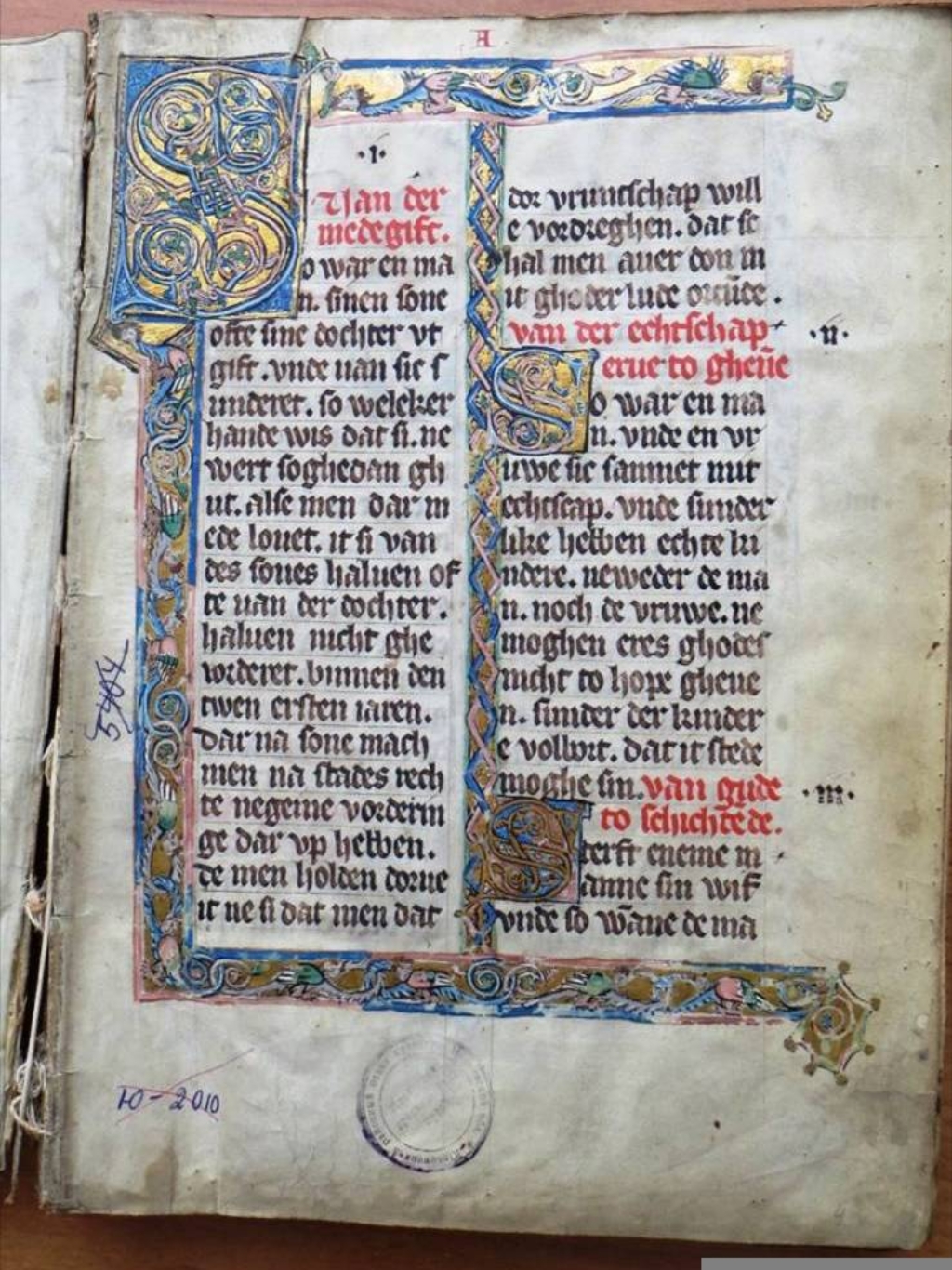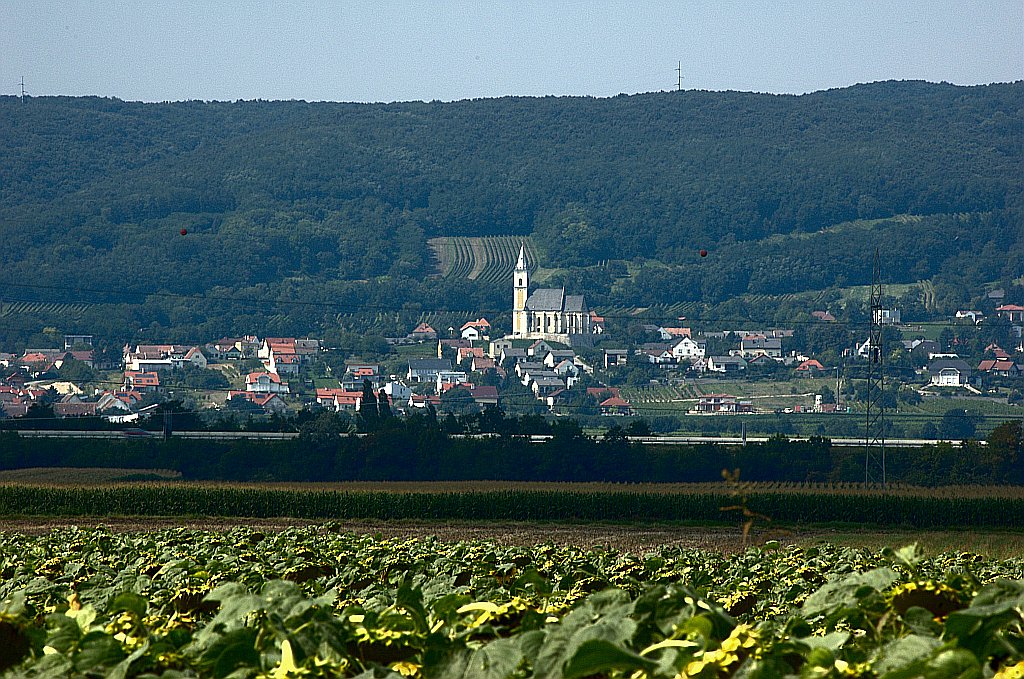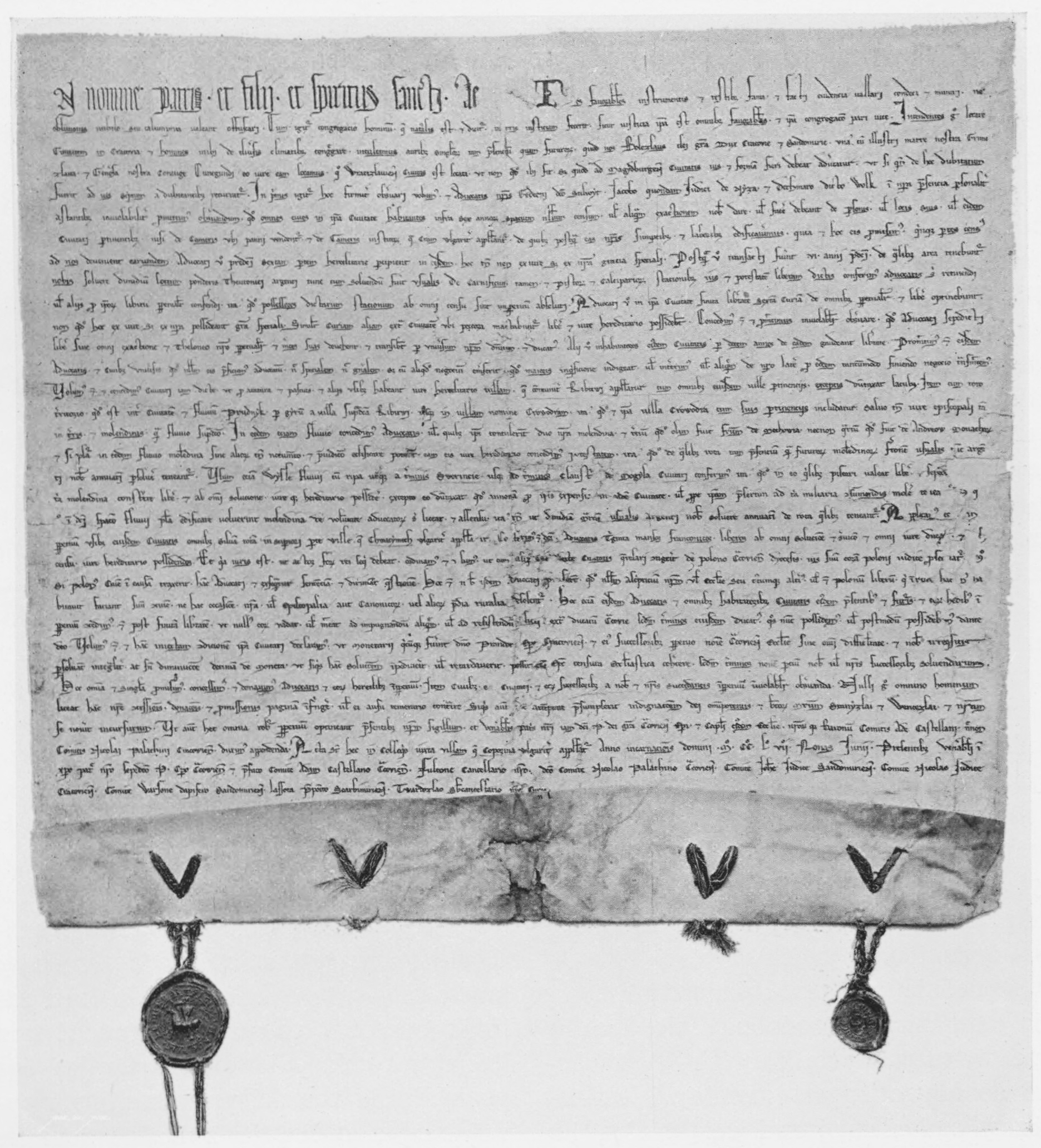|
Stadtrecht
Town privileges or borough rights were important features of European towns during most of the second millennium. The city law customary in Central Europe probably dates back to Italian models, which in turn were oriented towards the traditions of the self-administration of Roman cities. Judicially, a borough (or burgh) was distinguished from the countryside by means of a charter from the ruling monarch that defined its privileges and laws. Common privileges involved trade (marketplace, the storing of goods, etc.) and the establishment of guilds. Some of these privileges were permanent and could imply that the town obtained the right to be called a borough, hence the term "borough rights" (; ). Some degree of self-government, representation by diet, and tax-relief could also be granted. Multiple tiers existed; for example, in Sweden, the basic royal charter establishing a borough enabled trade, but not foreign trade, which required a higher-tier charter granting staple right. ... [...More Info...] [...Related Items...] OR: [Wikipedia] [Google] [Baidu] |
German Town Law
The German town law () or German municipal concerns (''Deutsches Städtewesen'') was a set of early town privileges based on the Magdeburg rights developed by Otto I. The Magdeburg law became the inspiration for regional town charters not only in Germany, but also in Central and Eastern Europe who modified it during the Middle Ages. The German town law (based on the Magdeburg rights) was used in the founding of many German cities, towns, and villages beginning in the 13th century. History As Germans began establishing towns throughout northern Europe as early as the 10th century, they often received town privileges granting them autonomy from local secular or religious rulers. Such privileges often included the right to self-governance, economic autonomy, criminal courts, and militia. Town laws were more or less entirely copied from neighboring towns, such as the Westphalian towns of Soest, Dortmund, Minden, and Münster. As Germans began settling eastward, the colonists m ... [...More Info...] [...Related Items...] OR: [Wikipedia] [Google] [Baidu] |
Lübeck Law
The Lübeck law () was the family of codified municipal law developed at Lübeck, which became a free imperial city in 1226 and is located in present-day Schleswig-Holstein. It was the second most prevalent form of municipal law in medieval and early modern Germany next to the Magdeburg Law. Lübeck Law provided for municipal self-government and self-administration yet did not negate dependence upon a lord, be it a bishop, duke, king or, in Lübeck's case, an emperor. Instead, it allowed the cities a certain degree of autonomy and self-reliance in legislative, judicial and executive matters. While these authorities were vested in the city council (Rat), the members of which could be elected by co-option, the Lübeck Law represents a significant modernization of governance in that a class of burghers, as opposed to nobles, were responsible for the day-to-day affairs of governing. The Lübeck Law is not analogous to Hanseatic law. Hanseatic cities adopted either Lübeck or Magde ... [...More Info...] [...Related Items...] OR: [Wikipedia] [Google] [Baidu] |
Zipser Willkür
Zipser Willkür (i.e. ''Zipser arbitrariness''), alternatively known as Zipser Recht (i.e. ''Zipser Law'') as well, was the official German town law () of the Zipser Germans or Zipser Saxons (), an ethnic Germans, German group which settled in the Szepes County, Kingdom of Hungary, now Spiš (), northeastern Slovakia (as well as a small part in the Lesser Poland Voivodeship in southern Poland) starting in the Middle Ages. This particular law is the oldest German town law which was used in Middle Ages, medieval Slovakia, thereby applying town privileges where it was in effect. Historical background The Zipser Willkür provided a certain degree of local autonomy granted by the King of Hungary, Hungarian monarch to the urban settlements inhabited by the Zipser Germans in their komitat (i.e. county) in the former Kingdom of Hungary during the medieval period (and extended towards the constituent villages pertaining to the towns where the law held sway). The law was ratified by K ... [...More Info...] [...Related Items...] OR: [Wikipedia] [Google] [Baidu] |
History Of Sweden
The history of Sweden can be traced back to the melting of the Northern polar ice cap. From as early as 12000 BC, humans have inhabited this area. Throughout the Stone Age, between 8000 BC and 6000 BC, early inhabitants used stone-crafting methods to make tools and weapons for hunting, gathering and fishing as means of survival. Written sources about Sweden before AD 1000 are rare and short, usually written by outsiders. It is usually accepted that Swedish recorded history, in contrast with pre-history, starts around the late 10th century, when sources are common enough that they can be contrasted with each other. The modern Swedish state was formed over a long period of unification and consolidation. Historians have set different standards for when it can be considered complete. Some common laws were present from the second half of the 13th century. At this time, Sweden consisted of most of what is today the southern part of the country (except for Scania, ... [...More Info...] [...Related Items...] OR: [Wikipedia] [Google] [Baidu] |
Kingdom Of Hungary
The Kingdom of Hungary was a monarchy in Central Europe that existed for nearly a millennium, from 1000 to 1946 and was a key part of the Habsburg monarchy from 1526-1918. The Principality of Hungary emerged as a Christian kingdom upon the Coronation of the Hungarian monarch, coronation of the first king Stephen I of Hungary, Stephen I at Esztergom around the year 1000;Kristó Gyula – Barta János – Gergely Jenő: Magyarország története előidőktől 2000-ig (History of Hungary from the prehistory to 2000), Pannonica Kiadó, Budapest, 2002, , pp. 37, 113, 678 ("Magyarország a 12. század második felére jelentős európai tényezővé, középhatalommá vált."/"By the 12th century Hungary became an important European factor, became a middle power.", "A Nyugat részévé vált Magyarország.../Hungary became part of the West"), pp. 616–644 his family (the Árpád dynasty) led the monarchy for 300 years. By the 12th century, the kingdom became a European power. Du ... [...More Info...] [...Related Items...] OR: [Wikipedia] [Google] [Baidu] |
Royal Free City
A royal free city, or free royal city (Latin: ''libera regia civitas''), was the official term for the most important cities in the Kingdom of Hungary from the late 12th centuryBácskai Vera – Nagy Lajos: Piackörzetek, piacközpontok és városok Magyarországon 1828-ban. Budapest, 1984. to the Hungarian Revolution of 1848. The cities were granted certain privileges by the King of Hungary to prevent their control by the Hungarian nobility, hence "royal", and exercised some self-government in relation to their internal affairs and so were "free". From the late 14th century, the elected envoys of the royal free cities participated in the sessions of the Diet of Hungary, Hungarian Diet and so they became part of the legislature. This list also includes cities in the Kingdom of Croatia (other), Kingdom of Croatia and the Banate of Bosnia, which were part of the Lands of the Hungarian Crown. The term "royal free city" in the kingdom's languages is as follows: * * * * * * * ... [...More Info...] [...Related Items...] OR: [Wikipedia] [Google] [Baidu] |
Market Town
A market town is a settlement most common in Europe that obtained by custom or royal charter, in the Middle Ages, a market right, which allowed it to host a regular market; this distinguished it from a village or city. In Britain, small rural towns with a hinterland of villages are still commonly called market towns, as sometimes reflected in their names (e.g. Downham Market, Market Rasen, or Market Drayton). Modern markets are often in special halls, but this is a relatively recent development. Historically the markets were open-air, held in what is usually called (regardless of its actual shape) the market square or market place, sometimes centred on a market cross ( mercat cross in Scotland). They were and are typically open one or two days a week. In the modern era, the rise of permanent retail establishments reduced the need for periodic markets. History The primary purpose of a market town is the provision of goods and services to the surrounding locality. Al ... [...More Info...] [...Related Items...] OR: [Wikipedia] [Google] [Baidu] |
Magdeburg Rights
Magdeburg rights (, , ; also called Magdeburg Law) were a set of town privileges first developed by Otto I, Holy Roman Emperor (936–973) and based on the Flemish Law, which regulated the degree of internal autonomy within cities and villages granted by the local ruler. Named after the city of Magdeburg, these town charters were perhaps the most important set of Middle Ages, medieval laws in Central Europe. They became the basis for the German town laws developed during many centuries in the Holy Roman Empire. The Magdeburg rights were adopted and adapted by numerous monarchs, including the rulers of Crown of Bohemia, Bohemia, Kingdom of Hungary, Hungary, Crown of Poland, Poland, and Grand Duchy of Lithuania, Lithuania, a milestone in the urbanization of the region which prompted the development of thousands of villages and cities. Provisions Being a member of the Hanseatic League, Magdeburg was one of the most important trade cities, maintaining commerce with the Low Countries ... [...More Info...] [...Related Items...] OR: [Wikipedia] [Google] [Baidu] |
Kulm Law
Kulm law, Culm law or Chełmno Law (; ; ) was a legal constitution for a municipal form of government used in several Central European cities in the Middle Ages and early modern period. It was initiated on 28 December 1233 in the Monastic State of the Teutonic Knights by Grand Master of the Teutonic Order, Grand Master Hermann von Salza and Hermann Balk when the towns of Toruń (''Thorn'') and Chełmno (''Kulm'') received German town law, in particular as a modification of Magdeburg rights. Named after the town it was signed in, the original document (''Kulmer Handfeste'') was lost in 1244 when the town hall burned due to an attack by Świętopełk II, Duke of Pomerania. The renewed charter of 1 October 1251 was based on a copy in Toruń, but the rights were reduced. The town hall in Chełmno was the seat of the higher court of Chełmno law until 1458. This type of law was mostly granted by the Teutonic Order to cities within their monastic state, and by the neighboring Duchy of M ... [...More Info...] [...Related Items...] OR: [Wikipedia] [Google] [Baidu] |
Confoederatio Cum Principibus Ecclesiasticis
The ''Confoederatio cum principibus ecclesiasticis'' ("Treaty with the princes of the church") was decreed on 26 April 1220 by Frederick II, Holy Roman Emperor, Frederick II as a concession to the German bishops in return for their co-operation in the election of his son Henry (VII) of Germany, Henry as King of the Romans, King. It was an important source of law of the Holy Roman Empire, and was counted among its constitutional documents by the editors of the ''Monumenta Germaniae Historica''. In this law Frederick II relinquished a number of important Royal rights (''Regalia'') to the spiritual princes. Among other things, the bishops received the rights to mint coins and levy tolls in the German part of the Holy Roman Empire and to build fortifications. Moreover, they gained the right to hold courts in their lordships and to receive the assistance of the King or the Emperor in carrying out the sentences passed there. Acceptance of the sentences by the King or Emperor was guaran ... [...More Info...] [...Related Items...] OR: [Wikipedia] [Google] [Baidu] |





